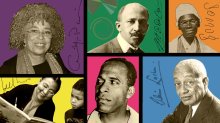4 Black Philosophers to Teach Year-Round
Weaving philosophy lessons into your curriculum can tease out bigger questions about identity, human rights, and artistic expression.
Your content has been saved!
Go to My Saved Content.When Liam Kofi Bright was five years old, he spent a long time obsessing over the difference between a big number and a small number. Eventually, Bright decided that anything over four was big and anything below four was not. When his mom asked him, “What about four?” he started crying.
“If you think kids aren’t asking big questions about why things are the way they are, what’s fair and what’s not fair, why things should be this way and not that way—it’s just not true. Kids wonder about these things,” said Bright, now a philosophy professor at the London School of Economics and Political Science, whose interest in asking questions with no easy answers helped pull him into the field.
Yet when he reflects on his philosophy training, Bright, who is Black, remembers learning very little about big thinkers who looked like him. “In the six, seven years of being taught philosophy, there was one occasion where I read something by a Black philosopher,” shared Bright, who coauthored a 2014 research paper on the state of Black philosophers in the United States.
Although there isn’t a uniform K–12 philosophy curriculum in the United States, it is being taught in schools around the country through creative efforts from educators, according to Michael Burroughs, a philosopher of ethics at California State University, Bakersfield, who has worked extensively on getting people—including students and teachers—engaged in philosophy. But often these lessons sideline Black philosophers, who have made significant contributions to how people think about and discuss topics such as gender, race, class, and culture, which can broaden how students perceive their worlds.
It takes more than adding the work of a well-known philosopher like Frederick Douglass, however, to expand students’ minds. To get them asking deeper philosophical questions that challenge the status quo and push them beyond material concerns, educators should consider exposing students to the groundbreaking thinking of Black philosophers across eras and geographies—from W.E.B. DuBois to Alain LeRoy Locke and Angela Davis. Here are four Black philosophers to consider, with resources to use for lesson planning in your classroom now and throughout the school year.
Bell hooks: A Champion for Intersectionality and Feminist Politics
Bell hooks was known as a child who “talked back,” or stood up to adults, as she later explained in a famous essay. Born in 1952 with the name Gloria Jean Watkins, hooks was raised in a working-class family in rural Kentucky, where she attended racially segregated public schools. She grew up determined to dismantle racism and promote gender equality. Eventually, she changed her name to bell hooks in honor of her maternal great-grandmother but decapitalized the initials to put emphasis on her ideas rather than herself.
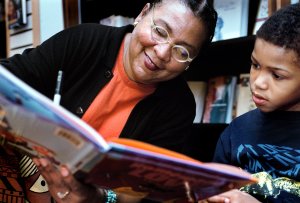
Hooks has taught at various universities and colleges since the mid-1970s and has gained international recognition for her work on the intersectionality of race, class, and gender. In 1981, she published her first major work, Ain’t I a Woman?: Black Women and Feminism, which challenges the minor role that Black women were given in both the feminist and Black liberation movements and argues that prejudice from slavery still has an impact on Black women today. In addition to writing more than 30 scholarly books, hooks has published a number of children’s books that celebrate Black identity and encourage children to accept themselves for who they are. “Beloved community is formed not by the eradication of difference but by its affirmation,” hooks wrote in her book Killing Rage: Ending Racism.
In the classroom: Teachers can use hooks’s children’s books like Happy to Be Nappy to boost young learners’ sense of self and to deepen their understanding of peers. Her books can provide a mirror for young students of color to see themselves in literature and a window for other students to learn about—and appreciate—the experiences of others.
For older students, teachers can use passages from hooks’s book Ain't I a Woman? as a starting point to discuss the important (and often neglected) role of Black women in the civil rights movement, such as this lesson from Teaching for Change, before launching into a larger discussion about gender roles and the social construction of identity.
Sojourner Truth: A Pioneer for Women’s Rights
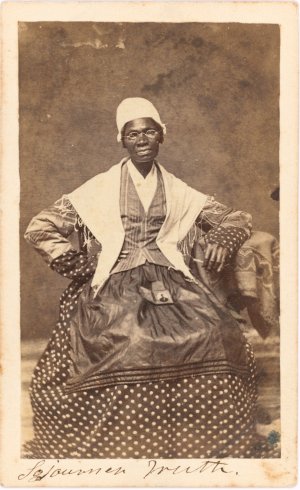
Throughout her childhood and early adulthood, Sojourner Truth was bought and sold as a slave multiple times, enduring cruel treatment from her owners in Dutch-speaking Ulster County, New York, where she grew up. In 1826, at the age of 29, she escaped to freedom with her infant daughter, Sophia; later, she moved to New York City to work for local preachers.
Being surrounded by people of faith encouraged Truth to pursue gospel teaching and speak up against inequality and oppression. As she traveled to preach and debate in camps, churches, and villages, Truth joined an abolitionist organization where she met Frederick Douglass and William Lloyd Garrison. In 1851, Truth gave her famous speech “Ain’t I a Woman?” at the Ohio Women’s Rights Convention, challenging the idea that women weren’t equal to men. Her work paved the way for other women suffragettes and activists in the 20th century.
In the classroom: Teachers can incorporate Sojourner Truth into lessons about the meaning of equality and justice, and trace her contribution to the American notion of individual rights from history to the present day.
This lesson by PBS, for example, suggests that students read about Truth’s life and reflect on how her 19th-century ideas served as a catalyst for the feminist and abolitionist movements in the 20th and 21st centuries. Additionally, Learning for Justice, formerly Teaching Tolerance, offers a lesson plan that guides students through a close study of the tone, purpose, and ideas embedded in the two versions of Truth’s 1851 speech—one published in a newspaper after Truth delivered the speech, and the other the more commonly publicized version.
Alain LeRoy Locke: Father of the Harlem Renaissance
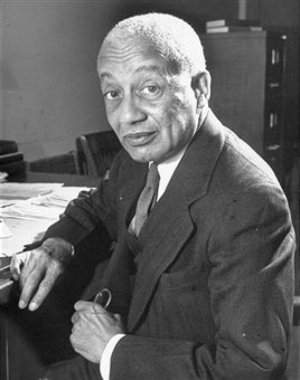
After graduating from Harvard University with degrees in philosophy and literature in 1907, Philadelphia-born Alain LeRoy Locke became the first Black person selected as a Rhodes Scholar. Locke later taught English at Howard University and formed one of the first philosophy departments at the historically Black college.
Locke is best known for his collection of writings published in 1925 called The New Negro: An Interpretation, in which he argues that the proliferation of African and African American art in the early 20th century brought about “a spiritual emancipation” for Black people—the freedom to express their individuality without societal constraints or bias. He is also regarded as the Father of the Harlem Renaissance, an artistic and cultural movement centered in New York City’s Harlem neighborhood in the 1920s and 1930s that galvanized Black music, dance, literature, and theater.
In the classroom: Teaching about Locke can provide the context for an array of humanities lessons about the power and meaning of artistic expression, such as this one from the Phillips Collection or one from Learning for Justice, which delve into the multitude of Black art, music, and literature from the Harlem Renaissance.
Educators can discuss how these works depicted African American life and culture in the early 20th century, helping shape and influence Black identity at the time—and into the present day.
Frantz Fanon: A Visionary of Black Identity
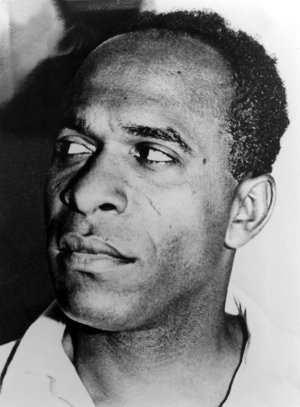
At the age of 18, Frantz Fanon left the French colony of Martinique, where he had grown up, to fight in World War II. After the war, he stayed in France to study medicine and psychiatry at the University of Lyon.
By the mid-1950s, the French West Indian psychiatrist was working as chief of staff for a psychiatric ward in Algeria, treating both Algerian and French soldiers. Through this experience, Fanon became interested in investigating the impact of colonialism on racial consciousness and societal bias—a topic he later explored through academic journals and books.
Fanon concluded in his book Black Skin, White Masks that “to be black and speak with perfect diction is still to be black, and therefore marked as special, unique, and surprising.” When a white French speaker is surprised by a Black person who speaks perfect French, for example, it reveals a deeply ingrained bias that the Black race is inferior to the white race, he explained.
In the classroom: If you’re teaching about microaggressions and bias in the classroom, you can use Fanon’s analysis as a conversation starter to get students talking about racial undercurrents and the unjust encounters they’ve faced—or to recognize their own implicit bias.
For older students, Eric Spreng, a high school literature teacher, shared that he teaches his students about postcolonial authors like Fanon to help illuminate the consequences of colonization on our society today. Educator Victoria Pang has also developed a lesson on Fanon, in which students are split into small groups to dissect his texts based on a specific theme, such as violence, capitalism, and language.
“There is no one-size-fits-all” approach to teaching philosophy to make it more inclusive, according to Anita Allen, the Henry R. Silverman Professor of Law and Professor of Philosophy at the University of Pennsylvania, who teaches philosophy of privacy and ethics. Allen recommends that teachers tailor whom they teach about to whom they’re teaching, and focus more on teaching students philosophy principles that enrich how they see and experience the world.
“We need to be focusing on what we think young people need in order to be well-educated and competent to deal with the kinds of issues that they’re going to face in their lives,” she said.
